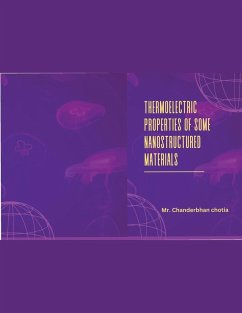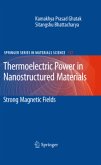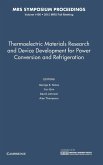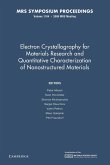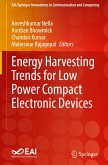Fossil fuels such as coal, oil or natural gas are consumed as a large part of the world's total energy consumption . Fossil-fuel-powered generators however produce the greenhouse gases such as CO2 or SO2 that cause environmental pollution and contribute to global warming. These problems challenge researchers to look for alternatives and sustainable energies. Thermoelectric (TE) materials are promising alternatives in this direction because they work without emissions of harmful gases or heat and without chemical waste. TE materials work noiselessly because they do not consist of any mechanical parts and convert thermal energy directly into electricity and vice versa. The conversion of thermal energy into electricity is based on the Seebeck effect and this phenomenon is also known as the thermoelectric effect or thermoelectric power, which is why the TE devices are more often referred to as thermoelectric generators (TEGs). Thermoelectric properties of some nanostructured materials refer to the study of the ability of materials at the nanoscale to convert temperature differences into electrical energy and vice versa. This phenomenon is known as the Seebeck effect, which is based on the generation of a potential difference when a temperature gradient is applied across a material. Nanostructured materials such as nanoparticles, thin films, superlattices, quantum dots, nanowires, and carbon nanotubes have unique properties that make them attractive for thermoelectric applications. These materials exhibit quantum confinement effects, which can enhance the thermoelectric performance by modifying the electronic and phononic properties of the material. The thermoelectric properties of nanostructured materials are characterized by the Seebeck coefficient, electrical conductivity, and thermal conductivity. The figure of merit (ZT) is a measure of the efficiency of thermoelectric materials, and it is determined by the ratio of the Seebeck coefficient, electrical conductivity, and thermal conductivity. Researchers use various techniques such as thermal annealing, band structure engineering, density functional theory, high-throughput screening, molecular dynamics simulations, electron microscopy, and X-ray diffraction to study the thermoelectric properties of nanostructured materials. Thermoelectric generators based on nanostructured materials have potential applications in energy harvesting from waste heat, solar thermoelectric power generation, and cooling devices. Hence, the study of thermoelectric properties of some nanostructured materials has significant implications for the development of sustainable energy technologies.

